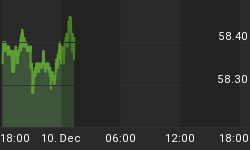And will continue to do so as long as the U.S. dollar remains under downward pressure and the Chinese policy is to cushion the greenback's decline. Chart 1 illustrates the result of China's inflation problem - i.e., rising prices for goods/services, financial assets and real assets. Chart 2 illustrates the reason for China's inflation problem - i.e., excessive credit creation by the People's Bank of China (PBoC), the Chinese equivalent of the U.S. Federal Reserve. The PBoC is increasing the size of its balance sheet at greater than 30% annualized. And the principal driver of that balance sheet growth is foreign assets - assets acquired through dollar-support activities. The PBoC can raise reserve requirements until the oxen come home but will not succeed in slowing Chinese inflation (monetary growth) until a policy decision is made to stop supporting the dollar.
Chart 1
Chart 2
Small Businesses Join Big Businesses and Households in Their Pessimism
The Small Business Optimism Index, which is tallied by the National Federation of Independent Business, dropped 1.1 points in October to a level of 96.2. As shown in Chart 3, this October level is below levels that prevailed just before the past two recessions. Charts 4 and 5 show qualitatively similar results for large corporation CEOs and for the little people - households. It seems as though just about everyone is as or more pessimistic about the economic landscape as they were just prior to the past two recessions. Everyone, that is, except the stock jockeys today. I wonder what Kool-Aid they are drinking.
Chart 3
Chart 4
Chart 5
















